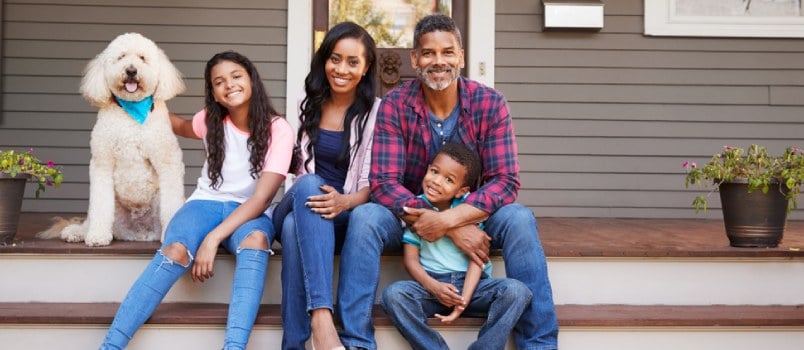 27 Dec 2024
27 Dec 2024
BY: pleasehelpme
Blog / Marriage
Comments: No Comments
Choosing the Right Path: Couples Therapy vs. Individual Therapy
Sitting across from a therapist for the first time can feel daunting. Should you go alone, or should you and your partner attend together? This decision isn’t just about logistics – it’s about finding the right approach to address what’s truly troubling you.
Maybe you’ve been lying awake at night, wrestling with personal anxieties that seem to spill into your relationship. Or perhaps you and your partner keep having the same argument, just with different words. Understanding whether to pursue individual therapy or couples therapy can make all the difference in your journey toward healing and growth.
As relationship specialists at Atlanta Couple Therapy, we’ve guided countless individuals and couples through this decision. Let’s explore how each type of therapy serves different needs and how to choose the path that’s right for you.
Understanding Individual Therapy: Your Personal Space for Growth
Imagine having a dedicated space where you can fully explore your thoughts and feelings without judgment. In individual therapy, you work one-on-one with a therapist who helps you understand your experiences and develop tools for personal growth.
Many of our clients find individual therapy helpful when they’re navigating life transitions, processing past experiences, or working to understand patterns in their lives. For instance, Sarah (name changed) came to us feeling overwhelmed by anxiety that affected both her work and relationships. Through individual sessions, she discovered how childhood experiences influenced her current responses to stress. Together, we developed strategies that helped her feel more confident and in control of her life.
What makes individual therapy unique is the freedom to focus entirely on your journey. Your session time is yours alone – to explore, question, understand, and grow
First, you’ll speak with Diana, our intake coordinator. She’ll listen to your concerns and help match you with the right therapist for your needs. We’ll explain our session fees, insurance options, and appointment availability. You can choose between our welcoming Buckhead office, our convenient Midtown location, or secure virtual sessions.
Ready to explore your options? Call us at [phone number] for a brief, informal conversation about how we can support you. Or if you prefer, send us a message through our confidential contact form, and we’ll reach out within one business day.
Remember, simply reading this article shows you’re already taking positive steps toward growth and healing. We’re here to support you whenever you’re ready for the next step.
Understanding Your Therapy Journey: How Different Paths Serve Different Needs
Think of therapy as a journey toward healing and growth. Just as every journey has its purpose and destination, different types of therapy serve different needs. Let’s explore how these therapeutic journeys unfold, so you can better understand which path might be right for you.
The Individual Therapy Journey
In individual therapy, you have a dedicated space to explore your inner landscape with the guidance of an experienced therapist. It’s like having a skilled navigator helping you chart your emotional territory. Your therapist walks alongside you as you explore patterns in your life, process experiences, and develop new ways of understanding yourself and your relationships.
For example, one of our clients discovered that her difficulty with workplace relationships stemmed from early family dynamics she had never fully processed. Through individual therapy, she gained insights into these patterns and developed new ways of engaging with colleagues that felt more authentic and satisfying.
The Couples Therapy Journey
Couples therapy creates a different kind of space – one where you and your partner work together to understand and strengthen your relationship. Your therapist serves as a skilled guide for both of you, helping you discover new ways of connecting and communicating.
We often see couples who say they’re “speaking different languages.” In couples therapy, they learn to truly hear and understand each other. One couple came to us feeling frustrated about constant arguments over household responsibilities. Through therapy, they discovered these conflicts weren’t really about chores – they were about feeling valued and appreciated. With this understanding, they developed new ways of expressing their needs and supporting each other.
When Both Journeys Work Together
Sometimes, the most effective path involves both individual and couple therapy. Like building a house, you might need to strengthen both the foundation (individual growth) and the structure (relationship dynamics). We can help you determine if this combined approach would be beneficial for your situation.
Recognizing When You’re Ready for Support
Deciding to start therapy is deeply personal, and there’s no single “right time” to begin. However, many people find themselves considering therapy when they notice certain patterns or feelings in their lives.
Listening to Your Internal Signals
You might notice yourself feeling stuck in certain patterns, despite your best efforts to change them. Perhaps you’re having trouble sleeping, changes in your appetite, or finding less joy in activities you usually enjoy. These experiences are your mind and body telling you that something needs attention.
Understanding Relationship Signals
In relationships, you might notice communication becoming more difficult, feeling emotionally distant from your partner, or seeing the same conflicts arise repeatedly without resolution. These patterns often indicate that professional support could help you and your partner find new ways of connecting.
What Our Clients Often Share
Many people tell us they wished they’d reached out sooner. They often say things like:
“I kept thinking things would get better on their own.”
“I wasn’t sure if my problems were ‘serious enough’ for therapy.”
“I thought I should be able to figure this out by myself.”
Let us be clear: You don’t need to be in crisis to benefit from therapy. Just like regular physical check-ups supporting your physical health, therapy can support your emotional well-being at any stage of life.
Taking the Next Step
If you’re reading this and recognizing some of these patterns in your own life, know that you’re not alone. Our team of experienced therapists in Atlanta specializes in creating a safe, supportive environment where you can explore these challenges and find paths toward healing.
We’re here to help you navigate this decision. Through a brief consultation, we can help you determine which type of therapy might best serve your needs. Whether you choose individual therapy, couples therapy, or a combination of both, our goal is to support you in finding the right path for your journey of growth and healing.
What Happens in Therapy: Understanding Your Journey
The First Steps: Beginning Your Therapeutic Journey
Walking into therapy for the first time takes courage. Understanding what happens in those first sessions can help ease any uncertainty you might feel. Let’s explore what you can expect when you begin therapy at our Atlanta practice.
Your First Individual Session
Think of your first individual therapy session as a conversation where you begin to tell your story. Your therapist will create a warm, confidential space where you can share what brings you to therapy. You’ll have time to discuss your concerns, ask questions, and begin building a therapeutic relationship based on trust and understanding.
During this 50-minute session, your therapist will:
- Listen carefully to understand your unique situation
- Ask thoughtful questions to gain deeper insight
- Work with you to identify initial goals for therapy
- Explain how therapy can help address your specific concerns
Your First Couples Session
A couple’s therapy session creates space for both partners to share their perspectives and begin understanding their relationship dynamics in new ways. These initial 75-minute sessions allow time for both partners to feel heard and understood.
Your therapist will guide you through:
- Sharing your relationship story
- Identifying patterns in your communication
- Understanding each partner’s hopes for therapy
- Creating a foundation for positive change
The Therapeutic Process: Beyond the First Session
Therapy is a journey of growth and discovery that unfolds over time. In individual therapy, you might explore how past experiences influence your present choices, develop new coping strategies, or work through specific challenges.
In couples therapy, you and your partner learn to:
- Communicate more effectively
- Understand each other’s emotional needs
- Navigate conflicts constructively
- Strengthen your emotional connection
- Practical Considerations: Making Therapy Work for You
We understand that practical details matter when choosing therapy. Here’s what you need to know about working with our practice:
Session Scheduling and Timing
We offer flexible scheduling options to accommodate your life:
- Daytime and evening appointments
- Some weekend availability
- Virtual therapy options
- Regular weekly sessions or bi-weekly options
- Investment in Your Well-being

We believe in being transparent about the financial aspects of therapy:
- Individual sessions: [cost range]
- Couples sessions: [cost range]
- Insurance options available
- Flexible payment plans
- HSA/FSA accepted
- Our Commitment to Your Growth
Every person’s therapeutic journey is unique. Whether you choose individual therapy, couples therapy, or a combination of both, our experienced team is here to support your path toward healing and growth.
We understand that reaching out for support can feel challenging. That’s why we’ve created a simple process for getting started:
1. Contact us for an initial conversation about your needs
2. Meet with our intake coordinator to find the right therapist match
3. Schedule your first session at a time that works for you
4. Begin your journey toward healing and growth
Supporting Your Decision
As you consider taking this step, remember that seeking support is a sign of strength, not weakness. It shows wisdom to recognize when professional guidance could help you move forward in your life or relationship.
Ready to explore how therapy might support your journey? We’re here to answer your questions and help you get started. Contact us at [phone number] or through our secure online form to schedule a brief consultation.
Your journey toward healing and growth begins with a single step. When you’re ready to take that step, we’re here to walk alongside you.
 13 Dec 2024
13 Dec 2024
BY: Dr. Laura Louis
Blog / Marriage
Comments: No Comments
Building Strong Foundations: Understanding and Strengthening Blended Families Through Therapy
When families blend, they create something both beautiful and complex – like weaving together different colored threads to create a new tapestry. Each thread brings its own strength and character to the whole, but the process of weaving them together requires skill, patience, and understanding.
Understanding the Blended Family Journey
Think of creating a blended family as building a new house while everyone is already living in it. The foundation must be strong enough to support everyone’s needs, the walls need to create both shared spaces and private corners, and the roof must shelter all family members equally. This process takes time, and like any significant construction project, having an experienced guide can make all the difference.
Let’s explore how therapy can help strengthen your blended family by understanding:
- How blended families develop and grow over time
- Why certain challenges arise and what they mean
- How therapy creates positive change
- Practical strategies for strengthening family bonds
Understanding the Dynamics of Blended Families
Imagine your family as an intricate dance where everyone is learning new steps while trying to maintain their balance. Each family member brings their own rhythm, expectations, and emotional needs to this dance. Understanding these dynamics helps us recognize why certain challenges arise and how to address them constructively.
The Emotional Landscape
When families blend, everyone experiences a complex mix of emotions. A child might feel both excited about new siblings and worried about losing their parent’s attention. A stepparent might feel eager to build relationships while uncertain about their role. These emotions create what therapists call an “emotional ecosystem” where everyone’s feelings influence each other.
Consider this example: When twelve-year-old Marcus showed resistance to his new stepmother Sarah’s attempts to help with homework, the surface issue seemed to be about homework. However, deeper examination revealed Marcus’s fear that accepting help from Sarah might feel like betraying his biological mother. Understanding this emotional layer helps families respond with empathy rather than frustration.
The Challenge of Changing Roles
Think of roles in a blended family like learning to play a new instrument in an existing orchestra. Everyone must adjust their playing to create harmony, but this adjustment takes time and practice. Parents often struggle with questions like:
“How do I balance attention between my children and my stepchildren?”
“When should I step back and let my partner take the lead with their children?”
“How do we create new family traditions while honoring existing ones?”
These questions reflect the complex process of role development in blended families. Through therapy, families learn to navigate these roles with greater understanding and flexibility.
How Therapy Helps: Building Understanding and Connection
Therapy for blended families works like having an experienced guide on a challenging journey. Your therapist helps you:
Understanding the Map
First, we work together to understand your family’s unique landscape – the relationships, dynamics, and patterns that make up your family system. This understanding helps identify both challenges and opportunities for growth.
Developing Navigation Skills
Just as explorers need different tools for different terrain, families need various skills to navigate challenges. In therapy, you’ll learn:
Communication Skills
- Expressing needs clearly while considering others’ feelings
- Listening to understand rather than to respond
- Managing disagreements constructively
For example, a simple disagreement about household rules might sound like this:
Parent: “The kids never clean their rooms!”
Stepparent: “They need stricter consequences!”
Through therapy, this same conversation transforms into:
Parent: “I’m feeling overwhelmed with managing the household tasks.”
Stepparent: “Let’s work together to create a system that feels fair for everyone.”
Building Emotional Understanding
Therapy helps family members recognize and respond to each other’s emotional needs. Like learning to read a new language, you’ll develop skills in:
- Recognizing emotional cues
- Understanding different perspectives
- Responding with empathy and support
Building Strong Foundations: The Role of Communication in Blended Families
Communication in blended families functions like a complex transportation system, connecting different neighborhoods (family units) that have their own established patterns and customs. Just as a city’s transportation system needs careful planning and maintenance, family communication requires intentional development and ongoing care.
Understanding Communication Patterns
When families blend, they bring different communication styles shaped by years of experience. Consider how this plays out in daily life: One family might handle disagreements through immediate discussion, while another prefers taking time to process before talking. These differences, rather than being obstacles, become opportunities for creating new, more effective ways of connecting.
For example, when the Anderson-Rodriguez family first blended, they discovered that Marc’s children were used to quiet, individual dinners, while Elena’s family treated dinner as a lively group discussion time. Through therapy, they learned to create a dinner routine that balanced both styles, gradually building comfort with a new shared approach.
The Architecture of Effective Family Communication
Think of communication as having several essential components, each serving a specific purpose in strengthening family bonds:
Active Listening
Active listening means more than simply hearing words – it involves understanding the emotions and needs behind them. When twelve-year-old Jamie says, “I hate these new family game nights,” she might really be expressing, “I miss having my parent’s undivided attention.” Learning to hear these deeper messages helps parents respond to the real needs being expressed.
Creating Safe Spaces for Expression
Every family member needs opportunities to share their thoughts and feelings without fear of judgment. This might mean establishing regular family councils where everyone has a voice, or creating special one-on-one time for deeper conversations. These safe spaces allow family members to express concerns before they become larger issues.
Navigating Conflict with Understanding
Conflict in blended families often arises from different expectations and experiences colliding. Understanding this helps us approach disagreements as opportunities for growth rather than threats to family harmony.
Consider this common scenario: A stepparent feels hurt when their stepchild doesn’t want to participate in family activities, while the child feels torn between loyalty to their biological parent and building new family connections. Through therapy, families learn to recognize these complex emotional dynamics and address them with empathy and patience.
The Role of Time and Consistency
Building strong communication patterns in blended families resembles learning a new language – it takes time, practice, and patience. Just as language learners progress through stages of comprehension and expression, family members gradually develop new ways of understanding and connecting with each other.
Supporting Children Through Transition
Children in blended families often face unique communication challenges. They might struggle to express complex emotions about family changes or feel caught between different family systems. Understanding these challenges helps parents create supportive environments for healthy expression.
For instance, creating a “feelings journal” where younger children can draw or write about their emotions often helps them process complex feelings. For teenagers, having a neutral space to discuss their experiences – whether with a therapist or trusted adult – can provide essential emotional support.
Developing Practical Communication Tools
Through therapy, families learn specific techniques for enhancing communication:
The Pause Practice
When emotions run high, taking a deliberate pause before responding can prevent escalation and allow for more thoughtful communication. This might mean agreeing on a family signal for “time out” during heated discussions.
The Reflection Method
Before responding to what someone has said, family members practice reflecting on what they’ve heard: “What I understand you’re saying is…” This simple technique often prevents misunderstandings and shows others they’re being heard.
Building New Family Narratives
One of the most powerful aspects of therapy involves helping families create their own unique stories about who they are together. This narrative develops through:
Shared Experiences
Creating new family traditions that honor both past and present relationships. These might be as simple as Sunday morning pancakes or as elaborate as yearly family reunions.
Celebration of Differences
Learning to view different family backgrounds as strengths rather than obstacles. Each family member brings unique perspectives and experiences that can enrich the family as a whole.
Moving Forward Together: Practical Strategies for Blended Family Success
Understanding how to implement positive changes in your blended family requires recognizing that family development follows natural stages, much like the seasons of the year. Each stage brings its own challenges and opportunities for growth. Let’s explore how families can navigate these stages successfully while building stronger connections.
The Natural Progression of Family Integration
Family integration develops gradually, following a pattern similar to how we learn any complex skill. Think about learning to play a musical instrument: first, we learn individual notes, then simple melodies, and eventually complex harmonies. Similarly, blended families progress through stages of understanding and connection.

The Early Stage: Setting Foundations
During the initial period of blending families, everyone experiences a mix of excitement and uncertainty. Parents might feel eager to create immediate harmony, while children need time to adjust to new family members and routines. Understanding this natural tension helps families approach this stage with patience and realistic expectations.
For example, when Michael and Sarah brought their families together, they initially worried when their children seemed hesitant to embrace family game nights. Through therapy, they learned that this reluctance wasn’t rejection but rather a normal part of adjustment. They modified their approach, allowing children to participate at their own comfort level while maintaining consistent, gentle invitations to join in.
The Middle Stage: Building Connections
As families move beyond initial adjustment, they begin developing deeper understanding of each other’s needs and patterns. This stage resembles learning to dance together – sometimes stepping on toes, but gradually finding rhythm and coordination. During this time, families often discover:
Understanding Individual Rhythms
Each family member processes change at their own pace. Some children might quickly embrace new siblings, while others need more time to adjust. Parents learn to recognize and respect these different timelines while maintaining consistent support for all family members.
Creating Shared Experiences
Positive family connections often develop through shared activities that create new memories without pressure to replicate past family patterns. These might include:
Taking cooking classes together, where everyone learns something new simultaneously, creating an equal playing field for interaction.
Planning family projects where each person contributes their unique skills, like designing and planting a garden together.
The Later Stage: Deepening Understanding
As families progress in their journey, they develop more sophisticated ways of relating to each other. This resembles how a group of musicians learns to anticipate each other’s cues and respond harmoniously. During this stage, families often experience:
Enhanced Communication Patterns
Family members become more adept at reading each other’s emotional cues and responding appropriately. They develop shorthand ways of expressing needs and offering support that feel natural and authentic.
Flexible Role Development
Rather than forcing predetermined roles, family members naturally find ways to contribute to the family’s wellbeing. A stepparent might discover they excel at helping with homework, while a stepsibling might become the family’s tech support expert.
Supporting Ongoing Growth Through Therapy
Think of therapy as providing a detailed map for your family’s journey. Your therapist helps you:
Recognize Growth Patterns
Understanding how families typically develop helps normalize challenges and celebrate progress. When families recognize that certain difficulties are common and temporary, they can approach them with more patience and confidence.
Develop Custom Solutions
Every family has unique needs and dynamics. Therapy helps identify specific approaches that work for your situation. For instance, a family struggling with dinner time tensions might discover that having music playing during meals helps create a more relaxed atmosphere.
Create Sustainable Changes
Lasting change requires understanding not just what to do differently, but why certain approaches work better than others. Therapy helps families develop this deeper understanding, leading to more sustainable positive changes.
The Role of Ongoing Support
Just as a garden needs regular tending, blended families benefit from ongoing attention to their relationships. This might include:
Regular Check-ins
Setting aside time to discuss how everyone is feeling about family life, addressing concerns before they become major issues.
Celebration of Progress
Acknowledging and celebrating positive changes, no matter how small, helps maintain momentum and build confidence in the family’s ability to grow together.
Looking Ahead: The Continuing Journey
Building a strong blended family resembles creating a beautiful mosaic – each piece contributes its own color and shape to the whole, and the process of fitting them together requires both artistry and patience. Through understanding, communication, and consistent effort, families can create something truly unique and beautiful together.
Blended families navigate unique challenges, but they also have the potential to experience profound love, connection, and joy. At Atlanta Couple Therapy, we provide specialized counseling to help blended families address these complexities and foster a strong, supportive foundation.
If your blended family is facing relationship struggles, professional guidance can make all the difference. Let us help you create lasting change and strengthen your family bonds. Contact Atlanta Couple Therapy today to schedule a consultation and take the first step toward a healthier, more connected future together.
 17 Apr 2022
17 Apr 2022
BY: Dr. Laura Louis
Blog / Sex
Comments: No Comments
Three (3) Compelling Reasons to Schedule Sex with your Spouse or Partner!
Three (3) compelling reasons to schedule sex with your spouse or partner! Having sex is an opportunity for couples to increase intimacy, enhance their bond, and more importantly enjoy each other! Also, sexual intimacy is critical to a healthy marriage — it’s the glue that uniquely bonds couples.
Read More “Three (3) Compelling Reasons to Schedule Sex with your Spouse or Partner!”
 12 Mar 2022
12 Mar 2022
BY: Dr. Laura Louis
Blog / Marriage
Comments: No Comments
Tips on How to Make your Marriage Affair-Proof: Secrecy Versus Honesty
Affair-Proof marriage – How-to Tips: Secrecy vs. Honesty
Affair-Proof Marriage! Many affairs start when their partner prefers to share their problems with another person besides their spouse. The researchers from the University of Colorado Boulder’s Department of Psychology and Neuroscience found out that about 21% of men and 13% percent of women reported infidelity at some point in their lifetime.
Read More “Tips on How to Make your Marriage Affair-Proof: Secrecy Versus Honesty”
 08 Mar 2022
08 Mar 2022
BY: Dr. Laura Louis
Blog / Marriage
Comments: No Comments
Three (3) Ways to SAVE a Failing Marriage!
Being married is not just about life-long commitments. It requires a lot of patience, forgiveness, understanding and acceptance in order to protect your marriage.
Marriage is definitely not easy and requires effort each and EVERY DAY. But it surely is worth fighting for. Are you feeling alone in your marriage?
 27 Feb 2022
27 Feb 2022
BY: Dr. Laura Louis
Blog / Marriage
Comments: No Comments
Poor Communication = #1 Reason Why Couples Split!
Is it time to improve your communication with your spouse?
Communication is important for couples. Here at Atlanta Couple Therapy, we see couples who are often fussing and fighting!
When you communicate effectively, you will be able to understand each other well. Failing to communicate will lead to a toxic relationship. This failure will create a separation for couples and will drive couples away from each other emotionally. Read More “Poor Communication = #1 Reason Why Couples Split!”
 12 Jun 2021
12 Jun 2021
BY: Dr. Laura Louis
Blog / Marriage / Parenting / Single Life
Comments: No Comments
Make the Best of Quarantine During COVID-19 and Enjoy it!
It has been a year since quarantine (COVID-19) hit, forcing a majority of us to plan a new life at home full-time. While this might mean more interactions with members of your household on a daily basis, it does not necessarily account for spending more quality time with your family. Here are some tips to implement to bond with your family and help strengthen your connection with each other.
Read More “Make the Best of Quarantine During COVID-19 and Enjoy it!”
 01 May 2021
01 May 2021
BY: Dr. Laura Louis
Blog / Marriage
Comments: No Comments
Ways to Build Trust in Your Relationship
Not every relationship is perfect, but often there are simple solutions to make it come close. One avenue that struggles often is trust. And this article is here to help you improve the issues that cause a lack of trust with your partner.
 28 Aug 2019
28 Aug 2019
BY: Dr. Laura Louis
Marriage
Comments: No Comments
Are Strict Gender Roles RUINING your Marriage?
“I now pronounce you as husband and wife” says the one who ties the two of you together. Now, the both of you will have the world for yourselves, together with your significant other. Are you scared? Are you thrilled? Are you enticed to know that both of you will face tomorrow by each other’s side?
 07 Jul 2016
07 Jul 2016
BY: Dr. Laura Louis
Blog / Marriage
Comments: No Comments
5 Things You Should Do to Get Back In Good Graces With the Person You Love
Maybe you are reading this article because you haven’t been giving your spouse the attention they need, you forgot a birthday or anniversary, or you did something unthinkable that you’d rather not mention. Whatever the reason, you have found the article that will change your life.
Read More “5 Things You Should Do to Get Back In Good Graces With the Person You Love”
